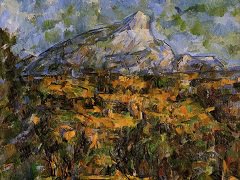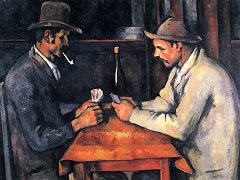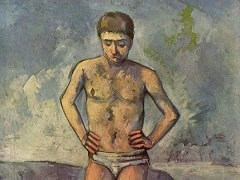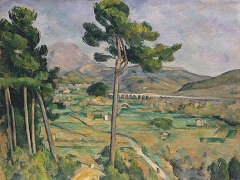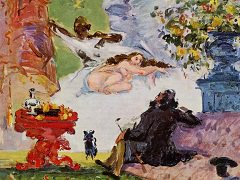Chateau Noir, 1904 - by Paul Cezanne

Cezanne's paintings after about 1895 are more somber, more mysterious than those of earlier years. His colors deepen, and his brushwork assumes greater expression. Spaces become more enclosed.
Compare this landscape with Houses in Provence, executed 20 years earlier.
That painting is open, while a web of branches screens this one. This place is crabbed and remote - much more difficult and forbidding. Compare the skies, too. This blue is no longer airy, but
leaden, darkened with touches of purple and green. Even the pale buildings have been replaced by a deeper ocher. Late in his life Cezanne was attracted not only to the fundamental order of nature,
but also its chaos and restlessness. The moody loneliness of this place seems matched to his own. He painted Cheteau Noir several times. It was the subject of local legends and had earlier been
called Cheteau Diable, "Castle of the Devil." With its Gothic windows and incomplete walls, it has the look of a ruin.
Paul Cezanne still painted in the open air, directly in front of his subject, as impressionist Camille Pissarro had encouraged him to do. But this is far from a
quick recording of fleeting visual effects. It is a long and intense meditation, an attempt to "realize" - to use Cezanne's word - his complete sensation of this place, which involves his
temperament, his vision, and his mind equally.


